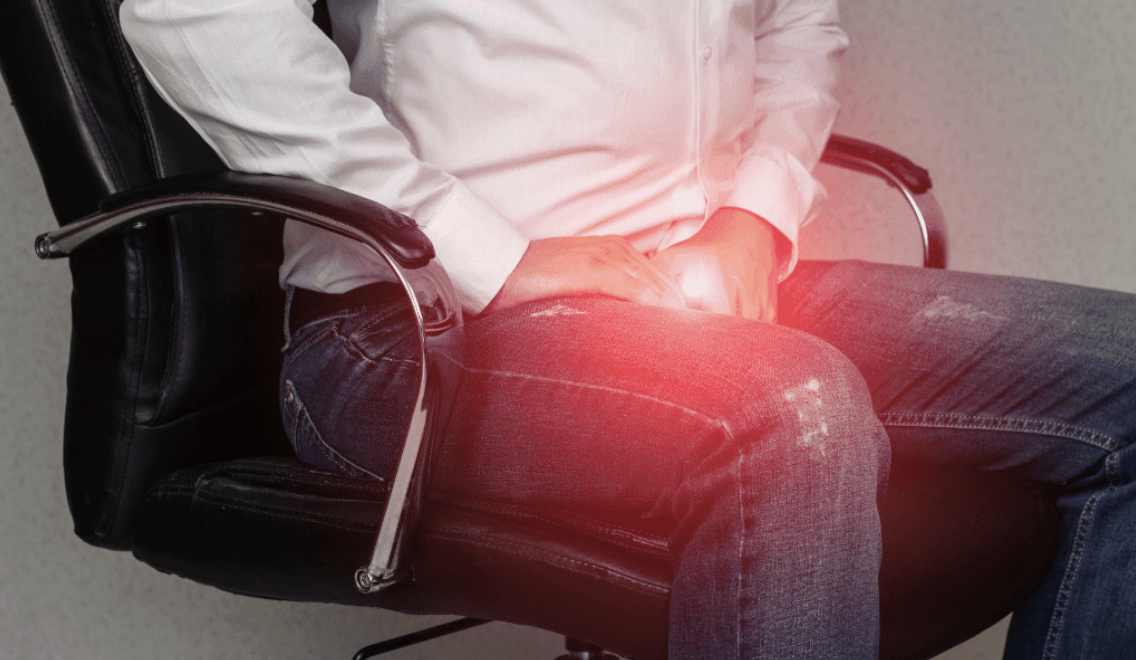Lower back pain is a prevalent health issue that can cause significant discomfort and affect an individual’s daily activities. It can be accompanied by back stiffness, decreased lower back movement, and difficulty standing. According to the Centers for Disease Control and Prevention (CDC), nearly 25% of US adults reported having lower back pain over three months.
Bioregeneration Integrated Medical Centre’s specialists are committed to providing the latest orthopedic pain management techniques and procedures. Dr. Janice Fisher specializes in regenerative medicine and offers treatments such as PRP therapy to help patients with orthopedic conditions such as back problems and pain. We are dedicated to finding the best treatment options for our patients, including those with lower back pain caused by bending, to help alleviate their symptoms and promote tissue healing.
This article provides helpful information about the causes, treatments, and prevention of lower back pain when bending to help individuals identify the appropriate treatment and prevent further injury.
What can cause lower back pain when bending?
Identifying the underlying cause of lower back pain when bending is essential to determine the appropriate treatment and prevent further injury.
Lower back pain when bending can be caused by various factors, including:
Back Muscle Injury: Injury to the muscles, ligaments and supportive tissues around the spine can cause back pain during movement and at rest. Bending can also place pressure on the lower back, leading to stretching and inflammation of these tissues, which can cause muscle spasms.
Herniated Disk: A herniated disk, also known as a slipped or ruptured disk, can cause severe lower back pain when it puts pressure on the surrounding nerves. This often occurs due to age-related changes that cause the disks to degenerate, making them more susceptible to slipping out of place.
Sciatica: This condition results from a herniated disk that presses on the sciatic nerve in the lower spine, causing severe pain in one or both legs. The pain can also include sensations of pressure and burning.
Spondylolysis: A stress fracture in a spinal vertebra can cause lower back pain and difficulty maintaining an upright posture. It often occurs in younger athletes, such as those playing football or gymnastics.
Arthritis: Various forms of arthritis can affect the joints in the back, causing pain. Osteoarthritis, rheumatoid arthritis, and ankylosing spondylitis are common forms of arthritis that can worsen over time.
Poor posture: This can lead to muscle imbalances, which can cause pain when bending over. It can also put excessive pressure on the lower back and cause spinal misalignment, leading to discomfort and pain.
Spinal stenosis: This may occur when the spinal canal narrows, putting pressure on the nerves and causing pain in the lower back and legs. This condition can be caused by aging, injury, or genetic factors.
Osteoporosis: This condition causes the bones to become brittle and weak. This increases the risk of fractures in the spine and other areas of the body.
What is the difference between muscle and disc pain?
Lower back pain can be caused by muscle and disc pain, and it is important to distinguish between them to receive proper treatment. The primary difference between the two is the location and sensation of the pain. Muscle pain tends to be felt in the muscles around the lower back and is often described as a dull, achy sensation similar to post-workout soreness.
On the other hand, disc pain may be caused by damage or pressure to the spinal discs and is frequently depicted as a sharp, stabbing pain that can feel debilitating and tingly. Other disc pain symptoms may include numbness, tingling, or leg weakness. An accurate diagnosis by a healthcare professional is essential to determine the cause of lower back pain when bending and develop an appropriate treatment plan. Depending on the cause of the pain, treatment may include rest, medication, physical therapy, or surgery.
What treatments are there for lower back pain?
When treating lower back pain, the treatment approach varies depending on the underlying cause. If the pain is caused by muscle or ligament strain, resting the back, taking over-the-counter nonsteroidal anti-inflammatory drugs (NSAIDs), and using ice or heat therapies may help alleviate the pain. However, it is essential to remember that while NSAIDs can be helpful for short-term pain relief, long-term use may have side effects, and it is essential to follow the recommended dosage.
Physical therapy exercises are often recommended to help strengthen the back and prevent further injury. A physical therapist can develop a tailored exercise program that includes stretching and strengthening exercises to help improve mobility, increase flexibility, and support the lower back muscles.
In severe cases of lower back pain, surgical intervention may be necessary. For example, in the case of a herniated disk that does not respond to conservative treatments, surgery may be necessary to remove or repair the disk. Other surgical procedures may involve spinal fusion or laminectomy, which can help alleviate pain and improve mobility.
It is important to consult a healthcare professional to determine the most appropriate treatment for lower back pain. It is also crucial to maintain good posture, exercise regularly, and avoid activities that may put excessive strain on the lower back to prevent further injury.
What are some prevention tips for lower back pain when lifting?
While proper treatment is necessary to alleviate the pain, practicing prevention techniques is equally important to prevent the pain from occurring in the first place. Here are some prevention tips to keep in mind:
Use Proper Lifting Techniques: When lifting objects, bend at the knees and hips instead of the waist. This technique helps to distribute the weight evenly across the legs and hips, reducing the pressure on the lower back.
Avoid Twisting the Spine: When reaching for something, avoid twisting the spine and pivoting the entire body instead. This technique helps to prevent injury to the lower back muscles and spine.
Maintain Good Posture: Poor posture can cause lower back pain. To maintain good posture, stand up straight, keep the shoulders back, and tuck in the chin slightly. When sitting, make sure the back is straight and supported.
Strengthen the Core Muscles: Strong core muscles can help to support the lower back and prevent injury. Exercise regularly to strengthen the core muscles, which include the abdominal, back, and hip muscles.
Maintain a Healthy Weight: Excess weight puts additional pressure on the lower back, increasing the risk of injury and pain. Keeping a healthy weight through regular exercise and a healthy diet can help to reduce the risk of lower back pain.
Use Proper Equipment: When engaging in physical activity or work that requires lifting heavy objects, use proper equipment such as back braces, lift belts, and proper shoes to help support the lower back.
Orthopedic Pain Management Treatments Available in Kingston, Jamaica
At our clinics, our team of specialists is committed to providing effective pain management treatments that promote tissue healing and reduce pain and inflammation. Dr. Janice Fisher has trained in the latest regenerative pain management techniques and procedures, including PRP injections, which have been used successfully to treat various orthopedic conditions such as back pain.
We take pride in our ability to work with each patient to find the best treatment options for their specific needs.
If you are looking for an effective pain management solution, contact us today.



